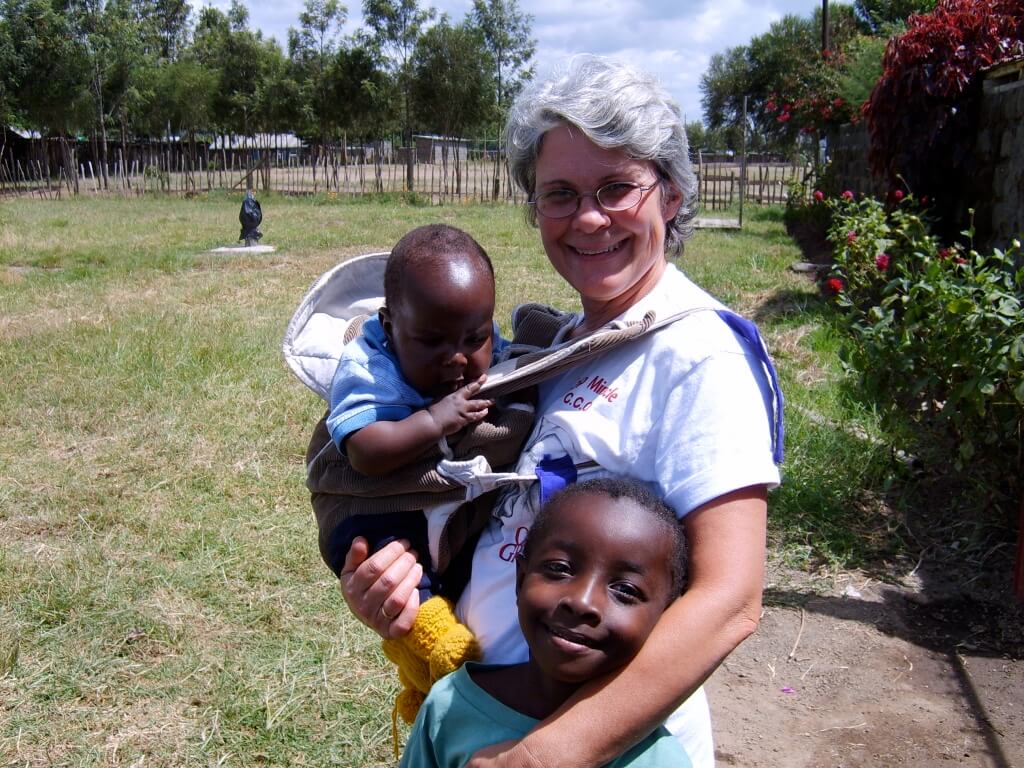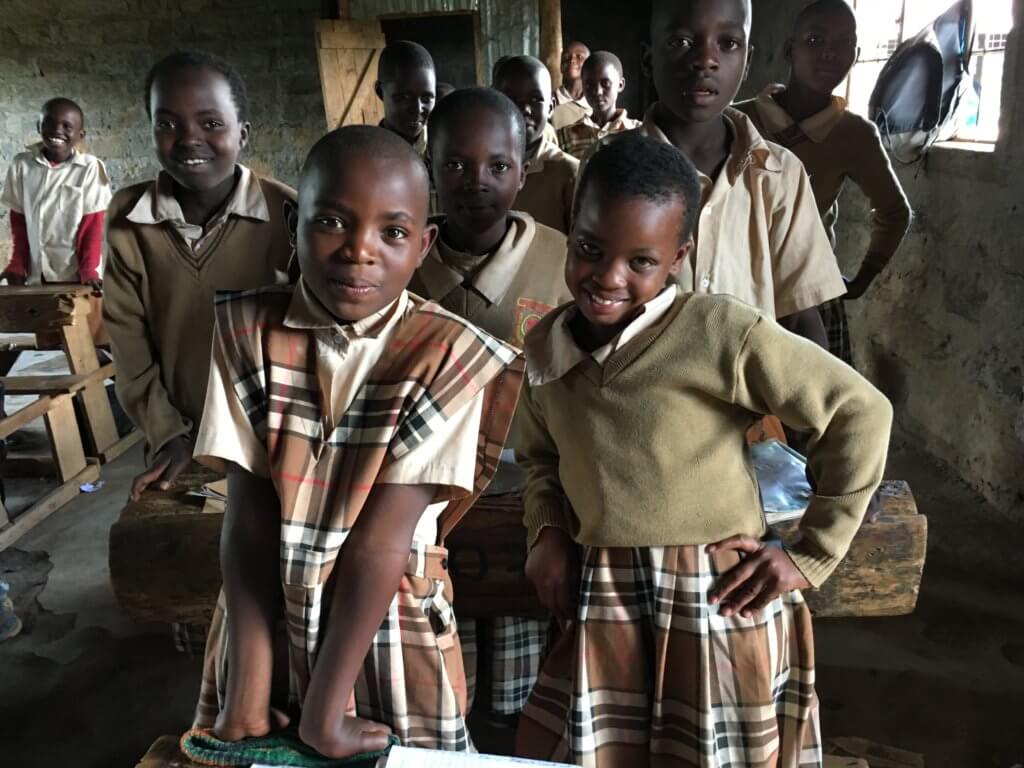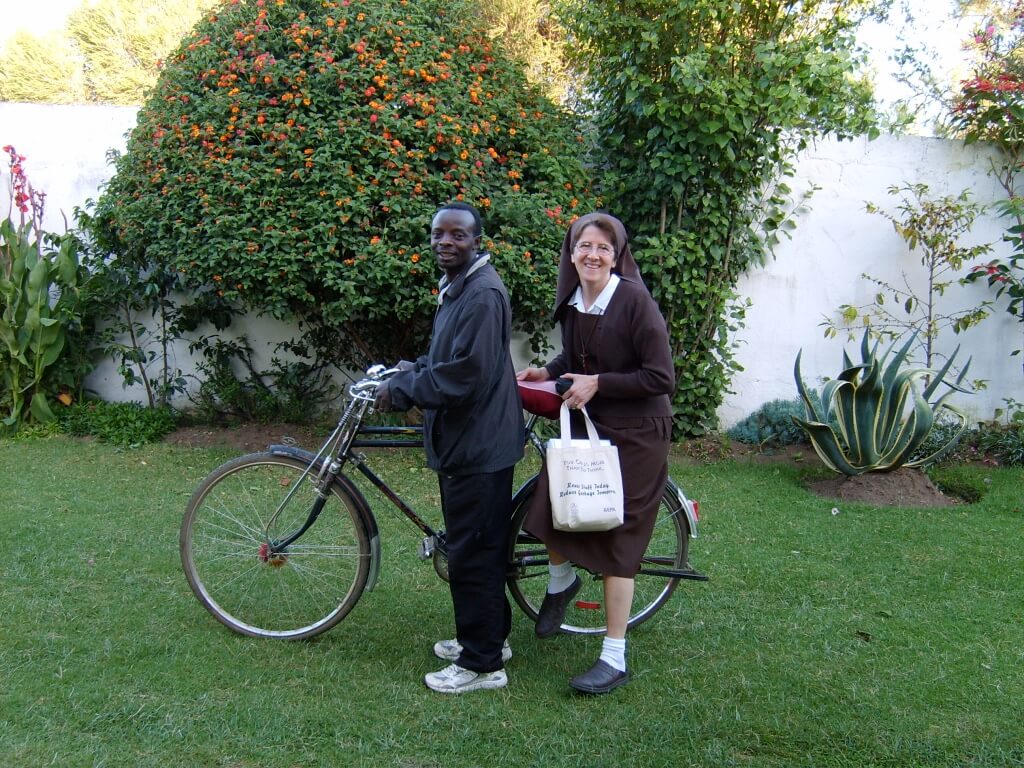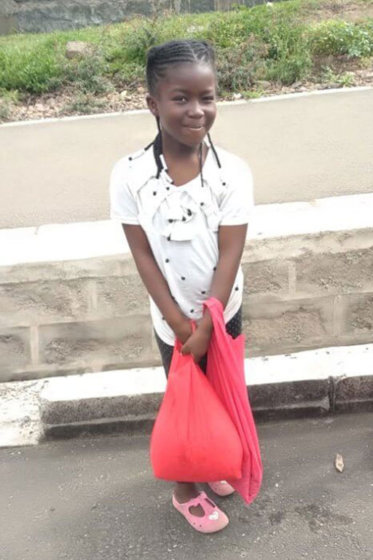Our Story
From its origins as Kids in Kenya, Everyone’s Child developed to provide educational opportunities to children in Kenya and India.
Everyone’s Child, Inc. is a non-profit organization dedicated to improving the lives of orphaned and impoverished children around the globe. Our mission reaches out to the children of the world: to educate where there are no schools, connect where there is isolation, and to care where there is great need.
Everyone’s Child stands behind this principle of provision, holding fast to the ideal that providing children with an education equips them to become the decision makers of tomorrow. Supplying these students with a daily meal has become an important part of this program also, as children need nourishment in order to learn.
Through partnerships with local leaders and citizens, the goal of this program is to participate in building self-sustaining schools in developing nations that support community development, access to quality education and a better life. We believe if you give a child a meal you feed him for a day, but if you give a child an education, you feed him for life.

The History
Everyone’s Child has its origins with “Kids in Kenya”—a project set up in the early 2000’s to support school-aged children in Kenya.
EC’s story began in 1997, when a Kenyan named Reverend Patrick Chege invited a missionary team from the Community of the Crucified One (CCO), a non-denominational church based in Pittsburgh, PA to his homeland. Ruth Young, EC’s founding director, was one of the missionaries on this trip. Reverend Chege led them on a tour of the country, beginning in Nairobi and then into the bush where they stayed in pup tents in Masai Mara. They visited several schools and in each one were treated with respect and dignity. Reverend Chege was well known throughout the region; everywhere they went he was asked to speak. He encouraged teachers and students alike, reminding them that having an education was one of the best gifts they could receive in their lifetimes, as it was a way to eliminate poverty in their country. At the close of the trip, the team agreed that the greatest needs they saw related to education and health care, a message that the group leaders took to the bishop and elders of their church in America.
The following year they were invited back to Kenya, this time to visit Reverend Chege’s hometown of Nakuru, the fourth largest city in Kenya. There he introduced them to a landowner who offered the church five acres of land on which to build a mission house in Lanet Umoja, a rural area twelve miles outside of Nakuru. His only proviso was that the CCO would help to build a school for the children in the area who were not currently being educated. These children were visible, as were hundreds of others they had noticed each day during the trip. They were seen playing in the dust, peeking out of mud huts or walking on the streets, often carrying smaller children on their backs or heavy loads of maize on their heads. Most had no shoes and their clothing was usually dirty and in tatters. As the team drove through towns and villages the children would see them coming, and since the “matatu” (the Kiswahili word for a small bus) had to slow down on the bumpy roads, they became aware that the children were waving and shouting “bilo, bilo!” They asked Reverend Chege what that meant and he replied, “They are asking for pens, because they believe if you give them a pen, it will mean that they can go to school.”
The missionaries returned to the U.S. with the landowner’s offer, and the following year the governing board of the CCO sent another missionary team from the U.S. to Kenya to begin constructing a mission house and a primary school.

The Building of Schools
The land that was offered to the church was part of a 735-acre tract of farmland on the outskirts of Lake Nakuru called Lanet Umoja, the Kenyan word “umoja” meaning “together” or “as one.” This land was previously owned by Arthur Wanyoike, the personal bodyguard of Jomo Kenyatta, Kenya’s first president in the 1960’s. The land had since been turned over to the Kenyan government and divided into plots to sell to people looking for an escape from tribal conflict resulting from political turmoil in the 1990’s or from the high cost of city living. A preschool that looked something like a rudimentary American tool shed was on the land offered to the church. It had been constructed in 1996 and boasted of 25 students and 3 staff members. Construction of the primary school began in 1998, and in 1999 a small chapel and mission house named Holy Cross Prayer Community and four classrooms of Lanet Umoja Primary School were dedicated. That same year the CCO sent missionaries from America to live in the mission house and children began filling the classrooms.

In the ensuing years, the population of Lanet grew from 1,000 families in 1997 to over 2,000 families in 2007, each family comprising approximately five people. People from different ethnic and religious backgrounds, including members from different tribes bought plots and began to set up their homes.
During the years that Daniel arap Moi was Kenya’s president, parents of primary students paid tuition and were required to supply their child with a desk and a uniform at the beginning of each school year. When opposition leader Mwai Kibaki won the December 2002 presidential election, he initiated several reforms, one of the first being to establish Kenya’s Free Primary Education Policy, thereby abolishing primary school fees. The response was overwhelming and primary schools across the country were inundated with close to 1.7 million new students who registered for school by the end of 2004. LUPS was among those schools affected and from 2004 to 2007 the student population nearly tripled in size. Enrollment in other schools in the area grew as well, but Lanet had more students than any of the other primary schools in the Dundori Zone (in Kenya, each district is divided into zones). Many of the villagers attributed the high enrollment to the academic success of the school and the aesthetic beauty of the building structure.
By 2018 the school had constructed 18 classrooms and held classes for over 1,000 children in preschool and kindergarten through Standard (grade) Eight. Classes hold between 40 and 60 children with one teacher assigned to each grade level. One principal or ‘head teacher’ oversaw the entire school. Lanet Umoja Primary is a government school, so the government determines the curriculum and pays the teachers and the head teacher.

A “Safe Area”
The following year the school’s population increased dramatically when thousands of Kenyans were forced to flee their homes due to a post-electoral crisis that threw the country into months of turmoil. By June 2008 the enrollment at LUPS had reached an all-time high of 1,400 students. Classrooms that had been built to hold 40 to 50 students now held 90 to 100 students. Many spent the school day standing and sharing textbooks with two or three other people as desks and supplies became scarce commodities. During the conflict the Kenyan government had deemed Lanet a “safe area” and had encouraged displaced or marginalized people to re-settle there.

Additional Schools
During the construction of Lanet Umoja Primary School, people from neighboring villages began requesting that schools be built in their villages. Leadership from the CCO responded by establishing “Kids in Kenya,” a program with the sole purpose of building schools in Kenya. The mission of this program was to promote education and training for children in Kenya through participatory partnerships with local leaders and citizens by building self-sustaining schools that supported community development, access to quality education and a better life. In 2003, the Nakuru Teacher’s Primary School, a primary school that presently has 12 classrooms and over 1,000 pupils was constructed in Kiti. In 2005, The Lord’s School, a school with 6 classrooms and 380 pupils was built in an area called Kampi ya moto. Classrooms were also added at Lanet Umoja Primary School, allowing children to be educated from preschool through eighth grade. By 2007 fundraising efforts from the CCO – members and non-members alike had facilitated the construction of three fully operational primary schools in three separate Kenyan towns with total enrollment reaching over 2,400 students. Between 2009 – 2010, Bishop Edward Donovan Secondary School was built next to the primary school in Lanet, with funds raised in the USA and construction being provided by the Kenyan community members.

Caring for Orphans
In 2005, the Lord Ranjuera Primary School was built in an arid region of Kenya called Kampi ya moto, which translates literally to mean “Camp of Fire.” Soon after the school was built, children whose parents were victims of the HIV/AIDS epidemic were identified. In addition, most of the children attending the school were malnourished and unable to learn. Kids in Kenya responded by providing funds to organize an orphan-feeding program for these children. Since that time, every day during the school week, all of the children attending this school are given a bowl of porridge to sustain them. Additionally, in all three schools, orphans and other needy children are given a daily meal of rice and beans. The cost for feeding the 500+ children who are currently benefiting from this program is between 10 and 30 cents per child per day, depending on food costs. People across the United States and Canada continue to contribute to the ongoing effort to sustain the orphans and underprivileged children in all three schools. Since the inception of the program, hundreds of children have benefited from this daily provision of food.

Research
In 2007, Ruth Young, our current director, conducted a doctoral qualitative research project in Lanet. Building from the perspectives of educators, parents, graduates of the school and American missionaries, Dr. Young explored the connection between the primary school and the surrounding village of Lanet Umoja, especially as this relationship related to the reciprocal development of one with the other. Reciprocity between the school and the village was evident in the use of the school after hours for weddings, meetings and other social events. Business in the village increased for those who sold durable goods. Many respondents indicated that the presence of the school had caused more families to move to Lanet, leading eventually to the availability of borehole water and making the introduction of electricity and technology possible in the village.
Messages of Mercy
As she was conducting her research, Ruth began a writing program called “Messages of Mercy,” connecting students who attend public and private schools in the United States with students at primary and secondary schools in Kenyan villages. Since then, hundreds of American and Kenyan children have been able to connect with each other simply by writing a letter. Some of these Kenyan children live ordinary lives, others have been orphaned by the ongoing HIV/AIDS epidemic, and still others have been displaced by political and tribal crises.

Their friends in the USA face their own issues as well. All of these children have one thing in common: they want to have a friend on the other side of the world. Messages of Mercy provides a safe way for students on both sides of the globe to share their ambitions and frustrations about everyday life. After introducing this program to students in Vermont, Ruth heard an 8th grade girl exclaim, “My pen pal is just like me! She worries about the same things I do!”

The Establishment of Everyone’s Child
When the primary school opened its doors in 1999 in Lanet, all of the children attending had at least one living parent. Ten years later the situation changed as more than 30 out of 900 students were orphaned, most of them due to the HIV/AIDS pandemic. That number has since grown as more children and adults in Lanet battle the disease that has taken Kenya and neighboring African countries by storm. Greene (2006) and many others have written about the staggering numbers of children affected by this disease, with predictions of the loss of life for at least 30 million Africans in the next twenty 20 years being reported. Kenya’s early reaction to the AIDS epidemic was to establish many programs mitigating the spread of the disease, but very few programs address the needs of HIV/AIDS orphans.
In more recent years, communities faced with a growing orphan population have responded with the same “harambee” (Swahili for “let’s pull together”) philosophy that built schools in the 1970s and 1980s, assembling themselves around the shared ideal of caring for their nation’s children, especially the most vulnerable in their midst.
This attitude toward caring for orphans was prevalent in Lanet as well. In 2006, the government solicited the help of teachers across Kenya, asking them to respond to the needs of orphans in their schools by reaching out to parents and villagers, asking them to bring whatever supplies they could to give to the orphans in their schools. The staff at LUPS put this concept to work by sending notices home at the end of each term, asking parents to bring in items for the orphans and the families caring for them. Since 2007, villagers have responded generously, sharing from their surplus, or in many cases, from their own want as they brought in sacks of maize, beans, clothing, money and other essentials. This response has led the teachers to name the program “Everyone’s Child,” a title that has become synonymous with assisting orphaned and impoverished students throughout the school year.
The principal of Lanet Umoja had this to say about the orphans at his school:
You know, that child doesn’t belong only to those who raise him, because one day that child will be educated, and then he will belong to the whole country, in fact, to the whole world! And his job will be to help others! So that is why he is called ‘everyone’s child’ – he belongs to all of us, even America. (Cyrus Mugi – Principal, Lanet Umoja Primary School, Nakuru, Kenya)
EC’s Sponsorship Program
In 2012, Ruth led a tour of Kenya with a group of teachers and local business entrepreneurs from Vermont. Shortly after this trip, several members decided to support orphaned secondary students at Bishop Donovan Secondary School. Since that time, EC’s Sponsorship Program has given hundreds of orphaned secondary students the opportunity to receive an education.

Collaboration of the Village, Government, and Sponsors
Throughout her stay in Lanet Umoja, the emergence of a relationship became apparent to Dr. Young. The villagers maintained that they (predominantly the parents) had supplied the land, the labor, and finally the children to fill the school. The government had installed electricity, and had provided access to free education, free books, and had hired and paid teachers for the school. The church sponsors had supplied the start up money for the school, made clean drinking water available to both the school and the village, and provided spiritual oversight and continued support. A conceptual model representing this relationship is shown.
Although these groups weren’t holding meetings or collaborating to create change, their aspirations were the same. They shared a single goal in this country, and the fact that they weren’t working against each other allowed students to reap the benefits of their combined effort to provide quality education for Kenya’s future generations. In effect, their unspecified relationship was giving an opportunity to these Kenyan children that they might not have otherwise been able to receive. That collaborative effort still stands today, as villagers, teachers, government workers, church members and NGO’s such as Everyone’s Child work toward improving the quality of life for the Kenyan child.

In 2009, Everyone’s Child, Inc. was established and incorporated in the United States to participate in the support of existing programs and to expand services to other areas. Since its inception, Everyone’s Child has participated in the orphan feeding program in Kenya, made contributions toward additional classrooms at the Lord’s School in Kampi ya moto, donated funds toward the building of a secondary school in Lanet, and has led two medical mission trips to Kenya to provide medical care for the children and adults in communities where our schools have been built. During each medical mission trip, in conjunction with the Kenyan Health Ministry, over 1000 people were seen and provided with medical care.
Current Programs
In 2016, EC hired William Aludo to oversee its programs in Kenya. William is from the city of Rongo in western Kenya. As EC’s Program Coordinator, William travels to Nakuru each month while school is in session to conduct EC’s Mentorship Program with the students we are sponsoring at Bishop Donovan Secondary School. William is also responsible for ensuring that the Orphan Feeding Program is carried out each month. In 2017 he discovered that the Miruya Primary School in Migori County was in need of teachers and additional classrooms. William collaborated with the local government officials to bring teachers to the school. He established a meal program for the entire school population and worked with families in the area to raise funds toward school improvements. EC is committed to building two additional classrooms there.

India
In 2018, Everyone’s Child began collaborating with Lee and Praveena Ruud of Abundant Life Care Ministries in Hyderabad, India. The two of them care for six orphaned boys, providing them with housing and an education. Everyone’s Child is partnering with them to ensure that the educational needs of these children are met while they are in school.
That same year, funds raised by EC supporters repaired a well and installed a hand pump in northern India, providing potable drinking water to children and their families in Orissa. The following January, more funds were sent to provide sweaters for over 200 children in that same region during a time when temperatures were unseasonably cold.

COVID-19
During the COVID-19 global pandemic in 2020, schools were closed and students around the world were sent home. This presented a tremendous hardship for the orphaned and vulnerable children in Kenya and India. Helping the students in India proved difficult as they were too spread out for the Ruud’s to be able to reach them. However, EC was able to assist in Kenya by partnering with local government leaders to set up food distribution stations at six schools. Hundreds of EC-sponsored children and their families were given enough food to last for three or four weeks at a time, sustaining them throughout the crisis.
To a certain extent, this effort seemed like a drop in the bucket. But to each child who received a bag of food, it meant so much more. It meant that they would eat without having to worry about where the next meal would come from. And perhaps even more importantly, it meant that they would be able to contribute to the family that had taken them in after losing their parents.

The Future
Everyone’s Child, Inc. is dedicated to serving the needs of children around the globe, particularly those who live in impoverished circumstances. For the past ten years, people across the United States have contributed to our ongoing efforts to sustain the needs of orphaned and underprivileged children in Kenya and India. Our goal is to continue building schools, providing food and support for children who have no parents or guardians, and connecting children in different nations, and to expand these programs to other developing nations.

